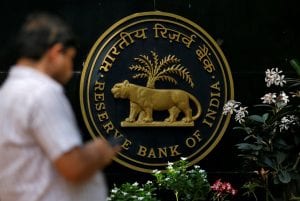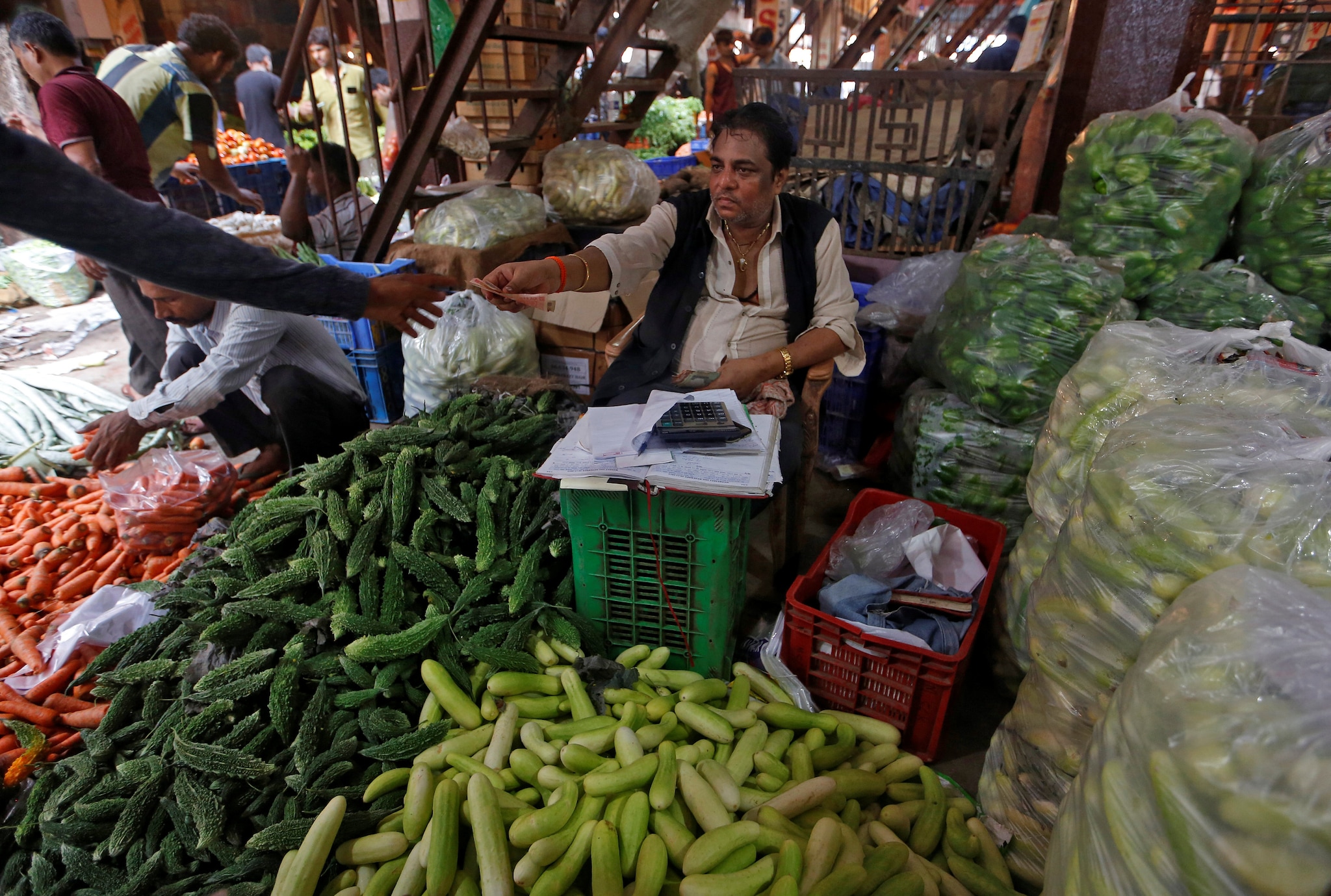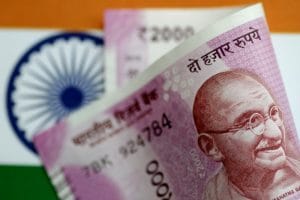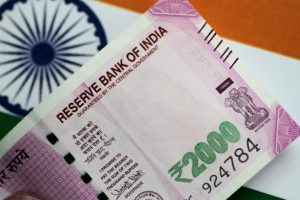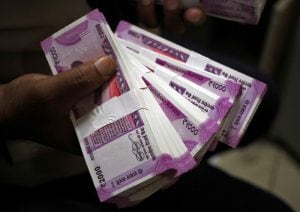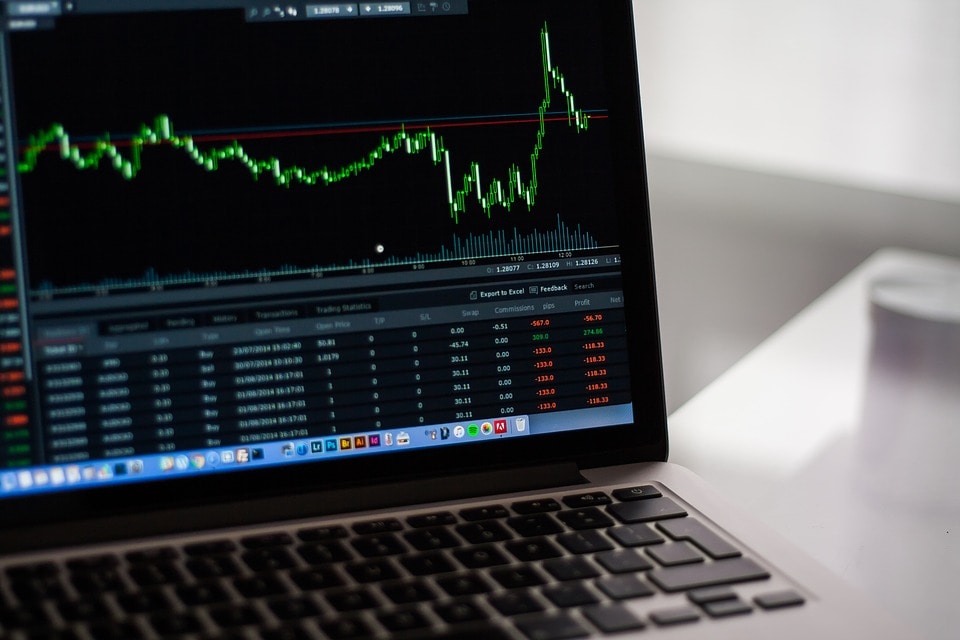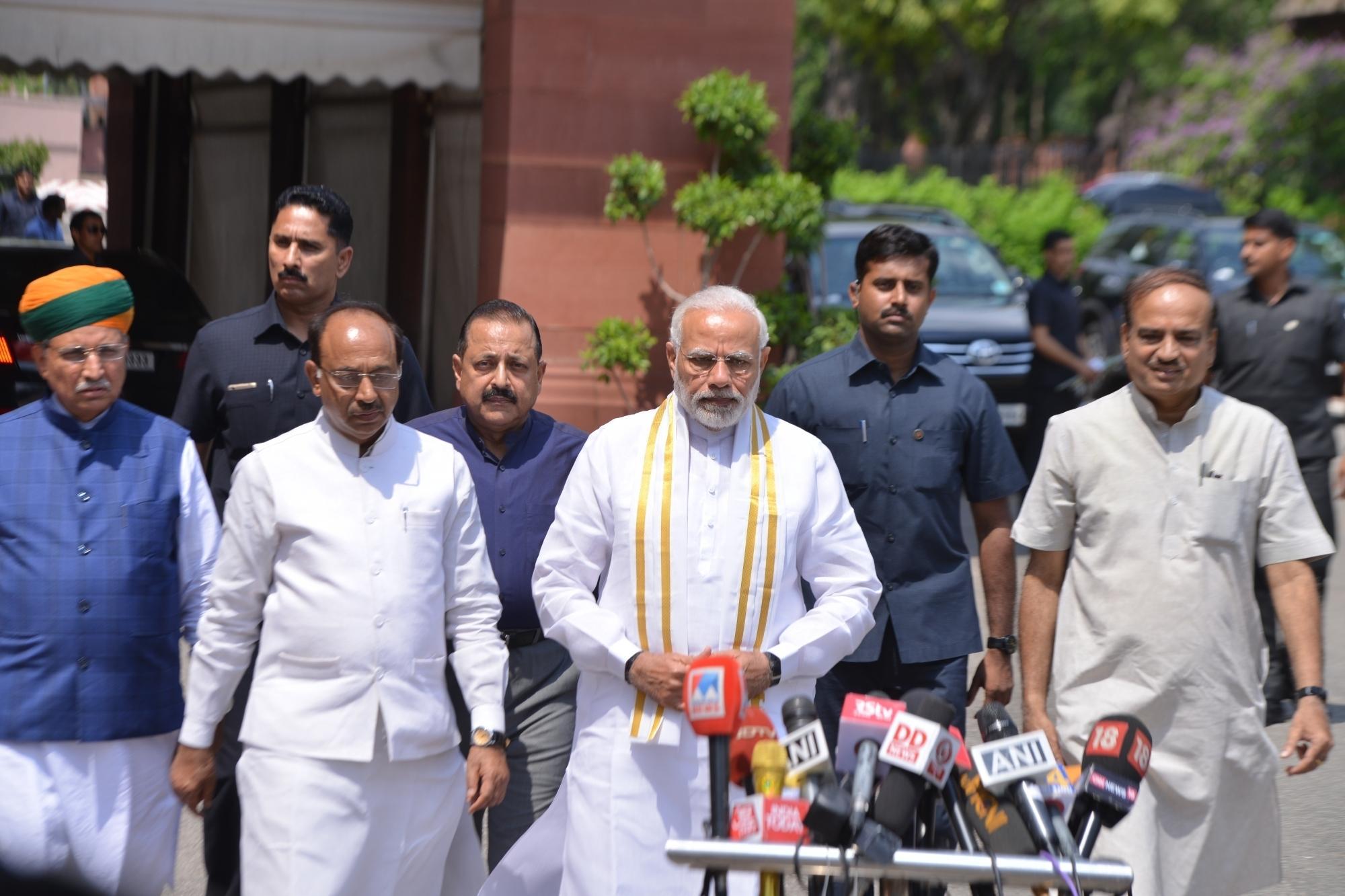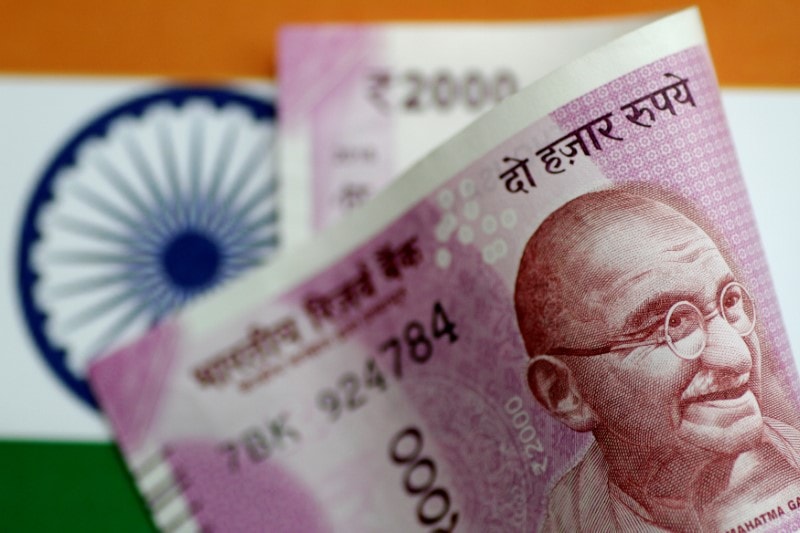RBI’s stand on financial stability: Here is what experts have to say

KV Prasad Jun 13, 2022, 06:35 AM IST (Published)
 Listen to the Article (6 Minutes)
Listen to the Article (6 Minutes)
Summary
In a surprise move, the Reserve Bank of India (RBI) o Friday kept the repo rate unchanged at 6.50 percent – the rate at which it lends money to commercial banks. The reverse repo rate was also retained at 6.25 percent. Markets were caught off guard as RBI maintained status quo on the benchmark interest rate. However, …
Continue reading “RBI’s stand on financial stability: Here is what experts have to say”
In a surprise move, the Reserve Bank of India (RBI) o Friday kept the repo rate unchanged at 6.50 percent – the rate at which it lends money to commercial banks. The reverse repo rate was also retained at 6.25 percent.
Markets were caught off guard as RBI maintained status quo on the benchmark interest rate. However, the central bank warned that rising oil prices and tightening of global financial conditions pose substantial risks to growth and inflation.
It also changed its policy stance to ‘calibrated tightening’ from ‘neutral’.
Meanwhile, RBI governor Urjit Patel on Friday reiterated that the domestic currency is still better than its emerging market peers and that the apex bank does not have a target for it.
Watch: Here’s what experts have to say about India’s inflation targeting framework
A majority of the analysts and bankers were expecting the six-member Monetary Policy Committee (MPC) to raise interest rate by at least 0.25 percent, while the developments over the last few days, especially the weakness in the rupee, had led to speculations that it could be even as high as 0.50 percent.
CNBC-TV18 caught up with C Rangarajan, former governor, RBI, Ashima Goyal member, Economic Advisory Council to the Prime Minister (PMEAC) and Ananth Narayan Professor, SPJIMR, to discuss the outcome of RBI mpc and the central bank’s inflation target framework.
Edited Excerpts:
Do you think inflation targeting is an inadequate mandate given the multi-tasks the central bank has to perform?
Rangarajan: Let me say that I favour flexible inflation targeting, I consider it appropriate but it is also equally important how one interprets inflation targeting.
To me, inflation targeting implies that when inflation goes above outside the range that is permitted, particularly on the upper side, the RBI has no option but to control inflation and use policy instrument exclusively to control inflation. There are no excuses or no other considerations which would come in the way of the central bank is acting.
But I do take the view that when inflation is within the comfort zone that is within the range, it should be possible for the central bank of the country to look at other considerations as well and I would not rule out, the central bank of the country taking action like raising rate of interest if other circumstances demand it.
Therefore, I would make a very clear distinction between whether the inflation outlook is within the range that is permitted or whether it is outside and when it is outside the mandate is very clear, the RBI has to act and must act to reduce inflation.
Of the many reasons that were adduced in favour of inflation targeting to present two – the first one is that even when it is operating within the band, the RBI has to be on the alert to ensure that it doesn’t go above the band and governments usually arm-twist them into favouring lower rates, so that we are able to encourage growth. Therefore, it is important to stick to the mandate even when you are within the range?
Rangarajan: Yes, even when the inflation rate or the expected inflation rate is within the range, the RBI or the central bank which has this particular mandate must act to ensure that over a long period that inflation mandate is maintained.
Therefore, that is part of inflation targeting mandate but that does not preclude the central bank when the inflation rate is within the range to take into account other considerations. That is my interpretation.
If we go back to the 2008 crisis, as far as the advanced countries were concerned they were seeing the inflation rate well below what was considered to be appropriate and, therefore, they did not act. There is still a considerable amount of debate regarding whether the failure is a monetary policy failure or it is a regulatory failure.
At best, monetary policy did not act and the interest rate was low and it led to high risk-taking on the part of many participants. But to come back to the point, when asset prices were rising the authorities looked at only the consumer price index (CPI) and did not act.
I think that was a wrong interpretation of inflation targeting. The inflation targeting does not preclude the monetary authority to raise the interest rate even within the comfort zone if you think that there are other factors operating which will push the inflation up.
Q: So, on hindsight, if the rupee continues to depreciate the RBI could also be held guilty of looking only at its inflation forecast and not acting proactively to control the current account deficit which has probably led to this fall on the rupee?
Rangarajan: The monetary policy statement is somewhat very cryptic about the depreciation of the rupee. There are only one or two references to it. If the opinion of the MPC or the RBI was that the deprecation of the rupee will have only minimal impact on prices and they are not acting they should have stated it.
If they had stated it then it would have become clear that this particular consideration has been taken into account. Now it is somewhat silent and one is not very clear whether this factor which is clearly within the mandate of inflation targeting has been adequately taken into account.
After all the rise in crude prices coupled with the depreciation of the rupee has impact on prices. One cannot ignore this aspect of the problem and it is incumbent on them to state very clearly what their view is in terms of the impact on prices of the depreciation of the rupee.
To be fair the governor in the Q&A did say that the risks of currency depreciation had been baked into the Reserve Bank’s forecast and its decision of not hiking but only changing the stance from neutral to calibrated tightening. But let me come to another issue do you think we need to write new rules or do you think the RBI could live with the current monetary policy legislated framework and still include financial stability as its goal?
Rangarajan: If you go by the interpretation that I have given perhaps that is not the interpretation on inflation targeting which is given by everybody. If you go by that interpretation there is really no need to make any change because many of these things are established by convention and tradition.
There is certain statement regarding what the level of appropriate inflation is and where should we stand. But it should not be interpreted that other considerations are irrelevant at all times.
When you go beyond the top, beyond the upper limit then don’t bring in other considerations and excuses not to act. But once you are within the band then you do take into account other considerations and perhaps I do not know it must have been in the back of the mind of the monetary policy committee members as well as the RBI. Some of these considerations that we are talking about not only the depreciation of the rupee but also the problems faced by the financial markets, non-bank finance companies and so on and their impact on the prices.
The price level is not only determined by the expected growth rate and liquidity considerations. There are many other considerations which have an impact on prices. I would be happier if the policy statements had gone into all those considerations. But to come back to the point that you made, I think that completely excluding all other considerations when the inflation outlook is within the range is not appropriate and we should establish some tradition in terms of how to operate the flexible system of inflation target.
The rupee market got terribly rattled after the RBI did not favour it with that expected rate hike. Do you think that this is a good time to visit the topic of inflation targeting altogether?
Narayan: I have always felt that flexible inflation targeting which essentially looks only at CPI inflation and the instrument of interest rates to control it is kind of blinkered because whether we like it or not monetary policy impacts a variety of issues and particularly the currency markets and capital flows.
This is not something for debate, this is known. Even the economists on the monetary policy committee will acknowledge this.
When you are using an instrument which you know has an impact on multiple factors and then you say I am not going to consider the impact on other factors and solely concentrate on one factor which you prefer, there is a lacuna in that system and we have to revisit this entire premise.
I think we have seen a problem arise because of this in the past and we are seeing a different kind of a problem arise now because of this completely blinkered inflation targeting approach.
The RBI stood true to its mandate and that mandate has also served the country well. We have seen inflation drop lower from double digits from 2011 to 2014-2015 and has stayed low for a goodish bit. Yet the markets were expecting that the current account deficit problem will need to be addressed and the fact that the rate hike did not come has led to a fairly deep cut in the rupee on Friday and on Monday. Do you think we need to expand the mandate of the RBI?
Goyal: Since we have just started on this inflation targeting and we have adopted it at a high inflation time, the thing is what we have adopted is flexible inflation targeting.
If you see the academic literature on inflation targeting, the idea is that you communicate something simple which helps anchor inflation expectations. How do you implement it? You have a lot of freedom there, especially if it flexible inflation targeting.
The problem is that we have been implementing it too rigidly. If all the flexibility which is available were used – for example when it was first adopted in Brazil, Armínio Fraga was the central bank governor and he communicated very clearly the supply shocks, what the central bank can affect, what it cannot and helped guide expectations down.
In India also we have seen inflation expectations falling. So, what we need is to realise that instruments in a country like India – a very different market, not so thick market, the big problem was not so much that interest rates have not risen because 25 basis points cannot affect currency markets that much.
The problem was that it was communicated that the central bank has nothing to do with the exchange rate or inflation targeting means that the central bank has nothing to do with the exchange rate, that is not correct because we have a managed float, we have reserves, we can increase reserves, we can take oil companies’ to demand out of the market, we can do many things.
You have had countries like Turkey and Argentina raising rates steeply to 60 percent and 25 percent without affecting depreciation. So, it is not that a rise in interest rates will soothe currency volatility. We had two back to back rises and volatility continued despite that. The point is that under inflation targeting, if inflation is within the band, it means excess demand is not high, it is not creating inflation and so you do not need to reduce it. You can do other things such as increasing exports.
Are you saying that there was nothing wrong with the RBIs decision or its theory but it perhaps should not have communicated it that way? It should have said that they are keeping inflation under control and that eventually is going to anchor the currency? Should it have been just communicated differently?
Goyal: Right, absolutely. If there is no inflation the value of your currency is protected, it depreciates if your inflation is higher than your partners.
So you would say that it is more a communication issue?
Goyal: Yes it is communication and also using your instruments flexibly, you must not communicate that the only instrument I have is the interest rate. You are communicating on inflation but you are free to use a number of instruments.
We have done some research recently which shows that the money supply matters because there is an informal sector and so liquidity, money supply, intervention, all that can be used and if you have theoretical models that throw up inflation forecast, all these variables enter. So you are absolutely right to address all these variables.
To be fair the governor did say that cheaper currency and crude have all been baked into the forecast. Narayan, we cannot deny that inflation targeting at least over the last two and half years have served us well. Ever since we have embarked on it, we have had inflation falling and remaining benign through most latter 2016 and 2017 and early 2018. The spikes that we have seen in crude and more particularly in food inflation did not become generalised inflation which was perhaps because of inflation targeting central bank, so should we just keep it as it is and add financial stability as a mandate for the RBI?
Narayan: I think it is worth a proper study on its own to see how much of this benign inflation that we enjoyed was on account of the sharp fall that we saw in oil and commodity prices and on the sharp and noticeable fall in food prices over the last few years, I think making that distinction is important.
Second, I do think that inflation targeting has also led to the current currency volatility that we have seen.
If we look at the last fiscal year, FY18, which ended on March 31, 2018, we already had a current account problem surfacing at that point in time – $49 billion of current account deficit (CAD) and FTI was only $30 billion dollars on net basis, so we had net outflow of $19 billion at that point in time and yet rupee appreciated.
In fact, the RBI intervened in the forex markets and brought $44 billion in that fiscal year. So where did that $63 billion come from? It came from FPI in debt, it came from net exporter selling, it came from unhedged ECBs, it came from NRE deposits, it came from speculative long rupee positions.
Each of these positions was at least partly if not wholly determined by the level of interest rate differentials. Therefore, monetary policy did beget this kind of reversible flows and that in turn caused rupee overvaluation, probably contributed to the morass in exports and the fact that we were importing too much. It also caused other kinds of vulnerabilities.
Over the last five years it has been $120 billion of such reversible flows which have come in chasing our high-interest rates and now all those flows are looking to reverse because our macros have turned.
So, I would say that at least to some extent the inflation targeting framework that we have followed has aggravated the vulnerability on the currency front. On all these counts, I do think we merit a full review of the framework. It might not be the right time to do it now.
I think we are facing too many problems on the macro front to worry ourselves about the inflation targeting and the review right now. But when the dust settles we definitely need to open this chapter. I think having blinkers on when you know interest rates impact currency and external markets, it just completely reduces the quality of the debate. We have to be aware of all the consequences and then make the choice. You might still choose to do what MPC did on Friday. But at least do it with eyes open rather than eyes blinkered.
This is a very different point that Ananth is making. He is saying that actually inflation targeting and keeping high-interest rates created a current account deficit problem that we refuse to see the emerging current account deficit problem which was just getting financed by huge debt flows which were at attracted to our high-interest rates. Now, this puts the debate in a very different context. You think we need to debate inflation targeting altogether and say that, no at all times inflation is only one of the goals, current account deficit, stability etc. are also goals?
Goyal: I agree with Ananth. Our interest differential is too high and it did attract inflows. In fact, these kinds of debt inflows made a huge killing because they got 4 percent returns, excess returns as well as 4 percent from currency appreciation. So, they were just flocking in. However, keeping interest differentials too high, was not mandated by inflation targeting, it was too over strict an interpretation of inflation targeting because remember inflation had crashed with the oil prices.
RBI did not correct the interest rate downward because they said we foresee that it will rise in the future. They were being extra cautious and conservative.
The second issue is they allowed debt caps to rise. They let more inflows come in, they had a graduated path to allow because we still have caps on debt inflows. So they are still a small percentage of our overall inflows.
It is still very good in India, we compare ourselves to Indonesia. Sometimes debt investors say Indonesia gave so much of a rise but debt inflows are very large percentage of their market. It is less than 5 percent of our market. So just as in equity market you don’t see much volatility when FPI goes out because domestic MFs are coming in. We need to develop our domestic debt market more.
Even 5 percent, the cap that was listed in Raghuram Rajan’s time and Urjit Patel’s time they gradually raised the cap that becomes too high percentage of foreign inflows because our debt market is quite large. So, that cap should not have been lifted. The interest differential would not have led to such a rise in inflows if the cap had not been lifted. The third point is that those inflows that came in could have been absorbed as reserves because they were excess inflows – arbitraging the interest differential.
So, they should have been absorbed in reserves and our reserves should have been even higher and healthier today to tackle outflows.
Q: Short point are you finding fault with the framework or you finding fault with the interpretation of the framework?
Goyal: I am finding fault with the interpretation and implementation of the framework.

Elon Musk forms several ‘X Holdings’ companies to fund potential Twitter buyout
3 Mins Read
Thursday’s filing dispelled some doubts, though Musk still has work to do. He and his advisers will spend the coming days vetting potential investors for the equity portion of his offer, according to people familiar with the matter

KV Prasad Journo follow politics, process in Parliament and US Congress. Former Congressional APSA-Fulbright Fellow










 Listen to the Article
Listen to the Article  Daily Newsletter
Daily Newsletter





